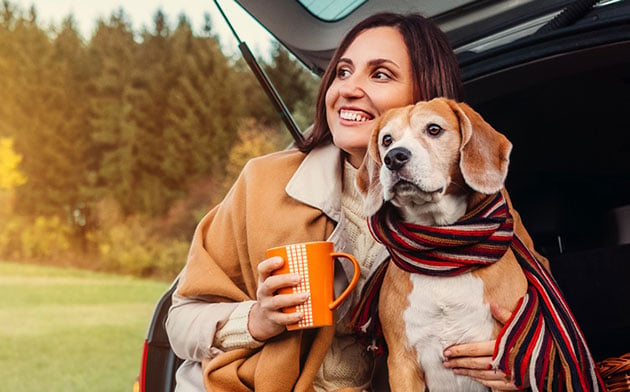If you own a pet, you already know that budgeting is just part of the deal—just like walking the dog or scheduling regular vet visits. If you’re starting to look for your own “man’s best friend,” it might be time to start thinking about all the expenses that go into owning a pet.
Before taking a trip down to your local shelter or pet store, you’ll want to make sure you’re prepared for your pet’s regular care as well as emergency situations. To help you get started, there are handy worksheets online that provide estimated expenses for anything from food to pet services.

“We budgeted pretty well for our first puppy … but I was still surprised by bills that came after some unexpected emergency veterinary care,” said Amanda McNutt, SELCO Insurance Services Personal Lines Specialist.
Owning a pet will present new challenges when it comes to budgeting for your monthly spending. And invariably, a lot of these new expenses will come from out of nowhere. The following guide breaks down these unexpected expenses into three categories. These guidelines mostly cater to cats and dogs, but many apply to other pets, as well.
Managing Curiosity
Household pets (especially the very young ones) will be very curious about their new surroundings. So, it might be a good idea to pet-proof your home before you bring him or her home. Reposition or rid your house of potential hazards to help reduce unfortunate incidents and save unwanted trips to the veterinarian.
You may find that your pets don’t need special accommodations. But for those that do, it may require a combination of these expenses:
- Plants. If one of your common houseplants proves to be toxic, you can replace them with pet-friendly varieties.
- Gates, grates, and outdoor fencing. Barriers in strategic places keep your pet from getting out and clear of indoor or outdoor hazards (space heaters and fireplaces come to mind).
- Storage solutions. To keep your curious pets away from choking hazards like paper clips and buttons, small storage containers with lids should do the trick.
- Ramps and pet stairs. Staircases aren’t always the safest bet for pets. Consider making your home more accessible for the wee ones by putting in pet steps.
Shenanigans
One thing you can expect from your new pet is that they’ll get up to no good—even if you're able to keep a pretty good eye on them. Sure, obedience training will help limit the frequency of their mischief, but you should still be prepared to replace, repair, or spend extra on the following at some point:
- Sofas and soft furnishings. Couch cushions, pillows, and other soft furnishings are magnets for pets’ claws. Scratch pads are a nice remedy for this.
- Wood furniture. Table legs and chair legs, get ready for plenty of teeth and claws.
- Curtains. Curtains are another potential plaything for your new pet. At some point, you may need to replace your claw-marked curtains with more durable window coverings.
- Cleaning supplies. House pets shed and make messes. It’s just part of the deal. So you may end up spending more on products like stain- and odor-removal solutions or pet-hair vacuums.
- Rugs and carpets. Beyond the usual “accidents,” general wear and tear from your pets can certainly alter the beauty of your floor coverings.
All those other vet bills
As a new pet owner, be ready for routine visits to the vet as well as emergencies. It’s even a good idea to have an emergency fund in place for serious medical issues. And beyond that, if your pet has a preexisting condition, you may consider pet insurance.
“We did our research and found an insurance plan that fit our specific needs,” McNutt said. “Preventive care is just as important as emergency coverage, and we’re glad to be covered for both.”
Oh, but there’s more. Some expenses fall outside of the regular checkups and emergencies. There’s a chance your pet will need extra care for one or more of the following:
- Allergies. Allergens are everywhere, and your pet might need specialty foods or medicine that increase your monthly expenses.
- Injuries. If your pet loves the outdoors, there may be the occasional encounter with another beast—both wild and domesticated. A first aid kit for bites, scratches, and stings can come in handy—and possibly save an emergency trip to the vet.
- Preventive medication. Heartworm or flea and tick medication are but a few of the remedies your pet may need on a regular basis.
- Ear and dental care. Some animals need special care for their teeth and ears. You can either do this yourself or clear room in your budget for extra trips to the groomer or vet.
Many pet-related expenses can easily be overlooked. By creating a solid plan for taking care of expected and unexpected expenses, you’ll be better equipped to keep the newest member of your family healthy, happy, and safe.


